Do some species of birds make their nests on the ground? If you answer yes, you are incorrect. Why do some flying birds build ground nests?
Because of the abundance of food on the ground, flying birds with duck-like, webbed feet are frequently ground-nesting birds.
Shorebirds, wading birds, ducks, game birds, and other birds all build their nests on the ground. Aside from that, there are several additional ground-nesting birds out there.
Why Birds Nest On the Ground?
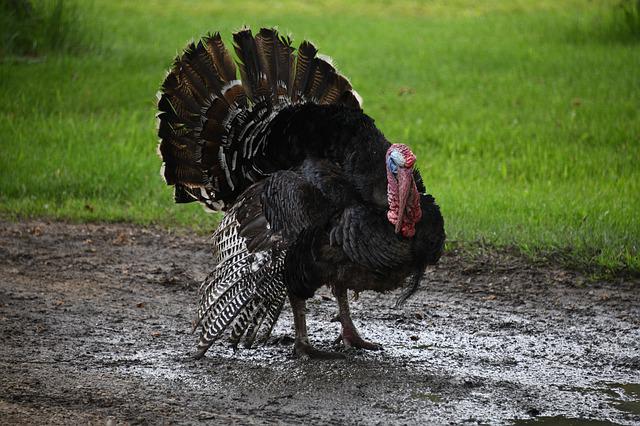
Game birds, shorebirds, waterfowl, and several songbird species all build their nests on the ground. This permits the bird to make the most of the habitat’s cover.
In certain circumstances, nesting takes place in wide prairies or along shorelines with minimal trees. In other circumstances, the ground-dwelling species’ eating and roosting patterns mirror the nesting habits.
Ground nests are one of many types of nests, and there are many different types of ground nests. Some are created on a gravel road, while others are cup nests. Some are just dirt scraped out spots. Different styles for different species’ requirements.
That’s correct. These nests are not built by a single type of bird, such as a flightless species. Although this is a logical assumption, a nest on the ground does not always mean it was built by a flightless species.
But Why Would A Birds Nest In A Tree If It Can Fly?
Even if there were, it’s unlikely that they’d want to, especially since the food they eat is found on the ground.
When we include all of the conceivable reasons for a bird to nest on the ground, not even just flightlessness, we get hundreds of species, not just the 60 or so that can’t fly.
Because of the large number of birds, this page will be separated into species groups, and a few birds out of each category will be featured for everyone’s sake.
If you come to discover a potential ground nest, this page will help you figure out which group it belongs to or which sub-group within that group it belongs to.
What are the Birds That Nest on the Ground?
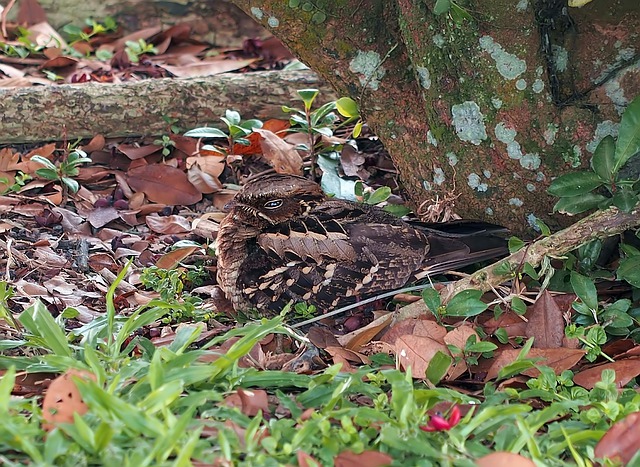
How do you image a bird’s nest getting built whenever you think about it? Usually, people imagine a cup nesting in a tree, which is understandable. We’ve all witnessed a bird’s nest in a branch, as well as our media promotes this image through television and films.
Many birds, from tiny songbirds to massive eagles, make nests in trees to defend themselves from predators. Some birds, though, defy the pattern.
To lay their eggs, these birds may construct flat platforms, scrape nests, or dig nests on or in the ground. There are numerous ground-nesting birds, and naming them all would be impossible. It is, however, considerably easier to separate them into groups.
We’ll look at different types of ground-nesting birds in this post. We’ll also give particular instances of bird species that demonstrate this behavior in each area.
1. Game Birds
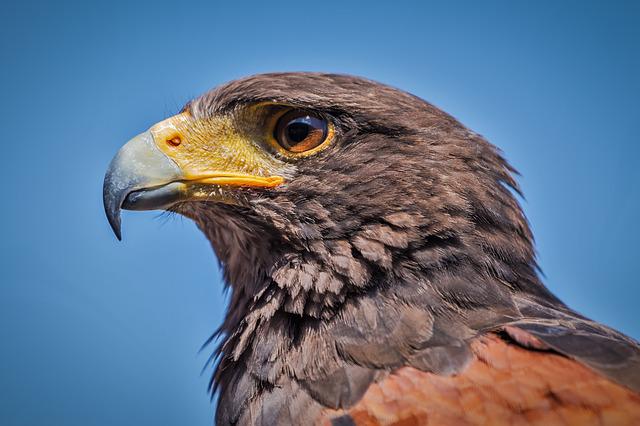
Game birds are any of the birds that humans have historically hunted for sustenance. Quail, pheasants, turkeys, and guineafowl are all included in the game birds group.
Because most game birds cannot fly well enough to make nests in trees, they almost all lay their eggs on the ground.
The majority of game birds do not migrate and remain in their nesting grounds all year. Some game birds build their nests within shelters, while others build them in the open.
Furthermore, certain game birds now reside on controlled estates as a result of their usage in sports shooting.
Groundskeepers guarantee that enough game birds reproduce in order to maintain a steady population for hunting. There is also a sizable commercial business dedicated to raising game birds for consumption.
Despite this, numerous game birds are still seen in the wild.
Wild turkeys like to make their nests in the woods. They do, however, build their nests along tree lines that abut highways, fields, or other clearings. Twigs and arboreal foliage border the nests, which are dug into small depressions on the ground.
They build their nests in thickets or beneath low-hanging branches where there is plenty of overhanging shelters. Guineafowl nests are also built on the ground. Their natural tendency is to build their nest in a quiet environment, such as among thick grass or fallen branches.
At any given moment, a single nest may store up to 50 eggs and will continue to expand until one of the females chooses to parent the brood.
2. Wading Birds
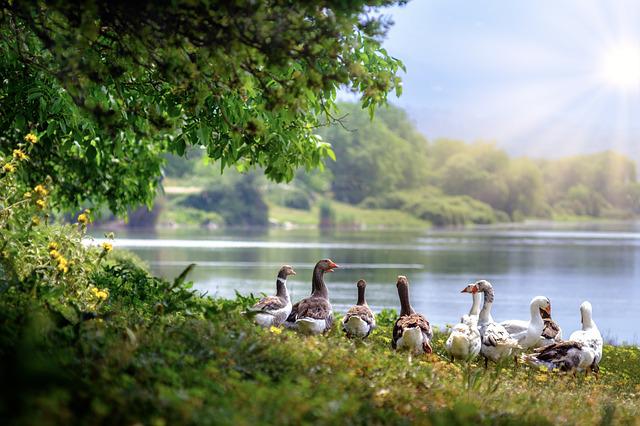
Wading birds are long-legged birds that typically reside near wetland areas and are sometimes grouped along with shorebirds. Penguins, razorbills, storks, grebes, cranes, egrets, and rails are some of the wading species found in the area.
Near marshes, lakes, or swamps, most migratory birds which nest on the ground do so. Wood birds and great blue herons, for example, prefer to make their nests over water. Most wading birds move to more temperate climes in the winter, just like shorebirds & ducks.
Some, on the other hand, will spend the entire year in their breeding region. Flamingos build their own nests composed of mud, pebbles, dried grass, and feathers. To construct the nest, both the male and female may collaborate.
They will drag dirt and materials into a mound using their bills, then form the nest with their feet. It may take four to 6 weeks to complete the procedure. The mound might be about 12 inches from the ground by the time they’re done.
Sandhill cranes, on the other hand, construct flat platform nests formed of twigs, grass, twigs, as well as weeds. Although the male will assist in gathering materials, the female is primarily responsible for constructing the nest.
The Sandhill crane nesting could be 4 to 5 feet in length even by the moment the female accomplishes the foundation. While incubating her eggs, the female will most likely continue to add ingredients.
3. Shorebirds
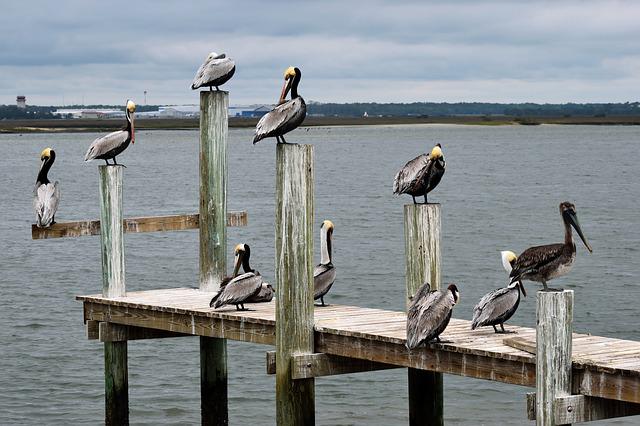
Another species of bird known as the shorebird lives near coastal marshes and seashores is Shorebirds. Shorebirds are non-wading birds that dwell near shores and mudflats and are occasionally confused with wading birds.
Avocets, gannets, gulls, and penguins are among the shorebirds. Most shorebirds move to more temperate climes in the winter, when they may be found near stony or rocky coastlines or shallow waterways.
The shorebird category contains some of the longest-migrating species. These birds spend a few months in Arctic or sub-Arctic environments as well as the summer in tropical environments but on the other side of the globe.
Several shorebirds that nest on the ground are doing so because plants rarely grow in their natural surroundings. As a result, they developed a preference for constructing eggs on rocky or sandy ground.
Avocets in the United States build their nests in big colonies with hundreds of birds. Their nests are built near water, especially on islands with sparse vegetation. A scrape nest is scratched out and lined with feathers, pebbles, grass, and other tiny things by the American avocet.
Adults may moisten their bodies during incubating to chill their eggs and protect them from overheating. Another type that nests on the ground or even in the ground might be an Atlantic puffin. They usually excavate a burrow nest in the ground or build a nest inside a rock fissure.
For offering warmth as well as protection for the females lying on eggs, the nest is lined with grasses and also twigs. Unlike other birds, puffins do not have to build a new nest every year.
4. Songbirds
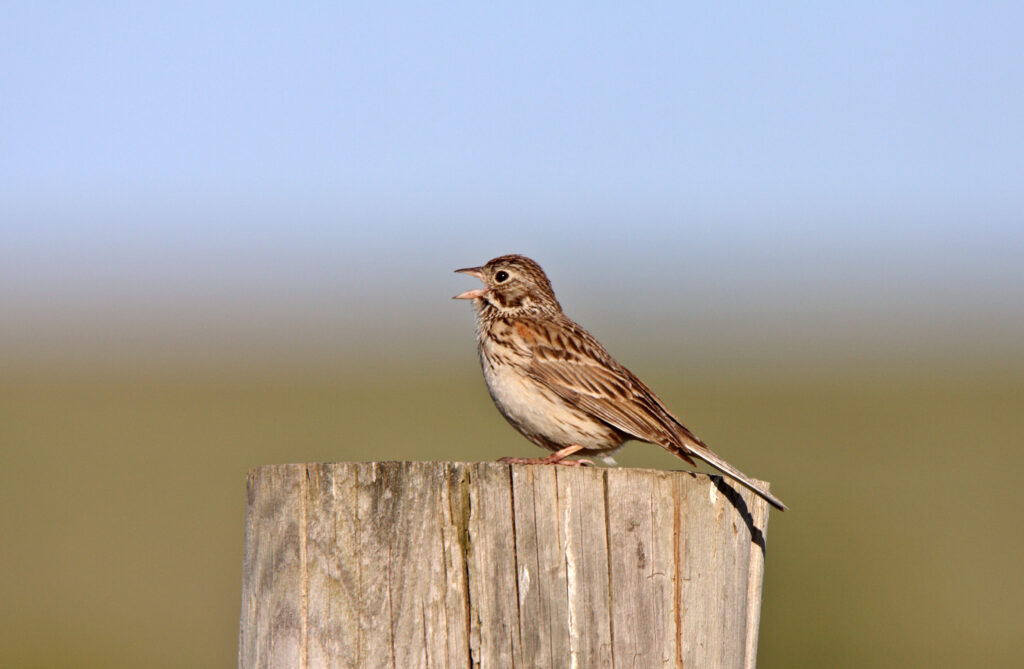
Songbirds are any of the more than 5000 species of perching birds. While most songbirds build their nests in trees, some do so on the ground.
Songbirds usually build their nests in trees to keep predators away. Songbird chicks should stay in the nests for weeks or months before they can escape and care for themselves.
Because they are unable to care for themselves, most songbirds build their nests at high heights away from predators. Songbirds who build their nests on the ground, on either side, have come up with a creative way to defend their young.
In wide prairies and meadows across northern Mexico, including Mexico and Canada, the western meadowlark lays its nest on the ground. Female meadowlarks will select a breeding location depending on their concealment.
They will usually pick a location with a dip in the ground and vegetation surrounding it. While most western meadowlarks build modest scrapes or cup nests to shelter their young, some go to tremendous lengths to preserve them.
These resourceful moms will create a cover for their nest out of the grasses around them. Bobolinks are another ground-nesting songbird. The female, like western meadowlarks, will pick the nesting location and build the nest herself.
The nest is frequently built on damp soil and is formed of braided twigs and grasses shaped into a cup.
5. Waterfowl

Waterfowl refers to a variety of aquatic bird species, particularly swimming birds. The preponderance of ducks is ground-nesting species that live anywhere near waterways.
They like to build their nests near water since their ducklings are properties and uses. This implies that shortly after hatching, duck chicks can walk about and fend for themselves.
As a consequence, ducks no longer have a biological necessity to establish nests on treetops or at higher altitudes to defend their offspring from predation. Many species move to warmer climates after the mating season and return in the spring when the weather changes.
When it comes to nesting, mute swans adopt an unusual strategy. Many opt to nest on islands in the center of a lake or at its edge. Mute swans create huge cup nests, up to 6 feet long and 1.5 to 2 feet tall.
The nest will be built from plants and feathers by the male swan. If it doesn’t meet the female’s expectations, he may be forced to start over. The American wigeon, unlike the mute swan, prefers to build its nest distant from the water.
An American wigeon nest can be found up to 100 feet miles from the local body of water. The female will construct a scrape nest, which she will then line with grasses, aquatic plants, and feathers.
Conclusion
Yes, this is all from us about Birds That Nest on the Ground. We have mentioned the ground-nesting bird’s type in this post. We should not be unkind to birds in order to maintain the balance of our ecology. We really shouldn’t break eggs unless absolutely necessary.
A ground-nesting bird is excellent for pest management and also important for soil fertility. As a result, we must be concerned about their viability and fertility.
However, we believe you have gained a greater understanding of ground-nesting birds. If you do have any ground-nesting bird expertise, please share it with us in the discussion area beneath.
FAQ
Are sparrows’ eggs laid on the ground?
Female Field Sparrows look over numerous prospective nesting places before choosing one. Nests are frequently made on the ground among clumps of grass or at the foot of shrubs in the spring when they are less conspicuous.
What makes certain birds construct their nests on the surface?
Game birds, shorebirds, waterfowl, and several songbird species all build their nests on the ground. This permits the bird to make the most of the habitat’s cover. In certain circumstances, nesting takes place in wide prairies or along shorelines with minimal trees.
Do birds burrow into the ground?
For their eggs, some bird groups excavate tunnels or holes. The obvious explanation is woodpeckers, as we’ve seen their nests in trees. Some bird families lay their eggs in soft mud, sand, or perhaps even stone burrows.
What birds prey on nests?
The most prevalent attackers of bird nests are crows and other corvids. They actively look for breeding birds in hedgerows and examine the ground from trees.
Last Updated on March 22, 2023 by Lily Aldrin
